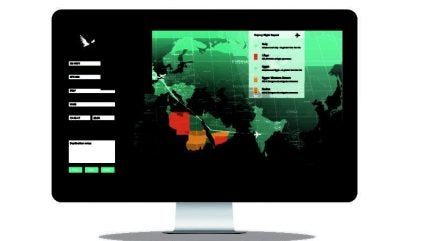
Virgin Atlantic is to use British software company Osprey’s Flight Solutions’ Flight Risk Assessment System, which uses artificial intelligence (AI) and machine learning to process data and improve the effectiveness and security of airline operations.
Osprey’s software gathers data from over 200,000 sources in 60 different languages, which is then submitted to its database of over 380,000 aviation security and safety events, comprising over three million data points. The system collects data from open sources, such as media announcements, social media and industry websites, and offers a free alerts system to individuals who sign up on Osprey’s website, informing them of recent developments.
“Virgin Atlantic Airways is committed to maintaining the highest standards in aviation security and delighted to be using Osprey’s innovative technologies to enhance our risk-based security management system,” said Virgin Atlantic head of security Nigel Williams.
“Their data-led analysis is the future of risk management for the aviation industry and is now a key element of our security and risk decision making.”
Osprey’s security system focuses on short-term responses to threats and long-term data analysis to identify and deal with the causes of those threats. By making his company’s data openly and readily available, CEO Andrew Nicholson aims to address problems of miscommunication that were significant in the downing of the Malaysia Airlines 17 (MH17) flight, which was shot down over Ukraine in July 2014, killing all 298 individuals on board.
“The key thing about MH17 and the situation that led to that was that some airlines had the information, and were avoiding that particular area,” Nicholson said.
“So the important thing is to make sure that the whole industry has that information and can therefore make the right decisions based on it. If there’s an inconsistency, and there still is an inconsistency across the industry, about what quality of information different operators have, hence why MH17 flew over that area when other operators didn’t.”
Nicholson is also interested in addressing the frequent operational hazards involved in managing an airline, from industrial action and social unrest to GPS interference and drone action. By recording and analyzing historical examples of these events, Osprey is able to predict when they will next occur, and plan accordingly.
“That’s what, actually, machine learning and AI capabilities are very good at identifying, because those trends and patterns are proven to be accurate looking forward as well as they are looking back,” he said.
“That one-off big flashy event can be hugely tragic and, again, have a massive impact, but actually operationally, it’s those little events on a daily basis that can really affect an operator.”
“We’re not here to solely provide support to the security team, we are here to help operators make their operations more safe, more efficient and that’s a key aspect.”
Osprey’s system divides the globe into blocks not constrained by country borders or Flight Information Region boundaries, enabling their profiles to be dynamically updated. Flight information within these blocks can also be overlaid with other data sets, such as terrain altitude and population density, so a range of trends can be identified.
Nicholson also suggested that humans would have an active role to play in the system. In addition to being able to provide a deeper analytics capability that AI is not necessarily able to, human input is required to refine and develop machine learning algorithms for future security and operational threats.
“I think we always need to have a human being quality-controlling the output, that’s very important to do,” he said.
“So rather than our analysts doing what analysts have traditionally done and trawling through reams and reams of data and trying to find those little tidbits of information, the system does all that for them and that means we can keep an instant global analysis of the world updated at all time.
“When the operator presses the button, they have that report in front of them instantaneously.”


